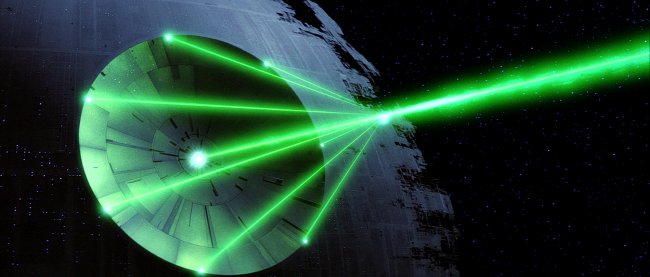This article is more than 1 year old
In assault on American values, Lockheed blasts pickup with raygun
Engine block baked in seconds by laser blast
Lockheed Martin has demonstrated a new laser cannon prototype by using the weapon to punch through the engine block of a small truck from a mile away.
The device, dubbed ATHENA (Advanced Test High Energy Asset), was – according to reports – able to burn through the vehicle's engine manifold "in a matter of seconds," disabling it.
Lockheed said that the cannon pushes 30kW of power, thanks to a technique called "spectral beam combining" that uses multiple fiber laser modules to form a single beam with "greater efficiency and lethality" than similar systems that project multiple beams.
The prototype combines technologies from earlier Lockheed projects, including the Area Defense Anti-Munitions (ADAM) laser weapons system and the Accelerated Laser Demonstration Initiative (ALADIN) fiber laser.

We reckon it works something like this (artist's impression)
The current model is ground-mounted, but Lockheed said its goal was to develop a version that can be mounted on vehicles.
"We are investing in every component of the system – from the optics and beam control to the laser itself – to drive size, weight and power efficiencies," Lockheed Martin CTO Keoki Jackson said in a canned statement.
"This test represents the next step to providing lightweight and rugged laser weapon systems for military aircraft, helicopters, ships and trucks."
Lockheed isn't alone in developing lasers for military applications. The U.S. Navy, in particular, has been keen on the technology, and has even deployed a ship-mounted laser cannon for active service in the Persian Gulf.
Whether blasting ground vehicles with lasers at long distance is really an effective combat tactic, however, remains to be seen.
Lockheed said the unfortunate test target had its engine and drive train running during the demonstration, but it was mounted on a test platform, and judging from the shape of the hole burned in its hood, it was completely stationary.
Whether a laser weapon like ATHENA would be able to train its beam on the same spot on a moving target for the several seconds needed to do serious damage was unclear.
Nonetheless, Lockheed said this early field test demonstrated the system's "military effectiveness." ®
